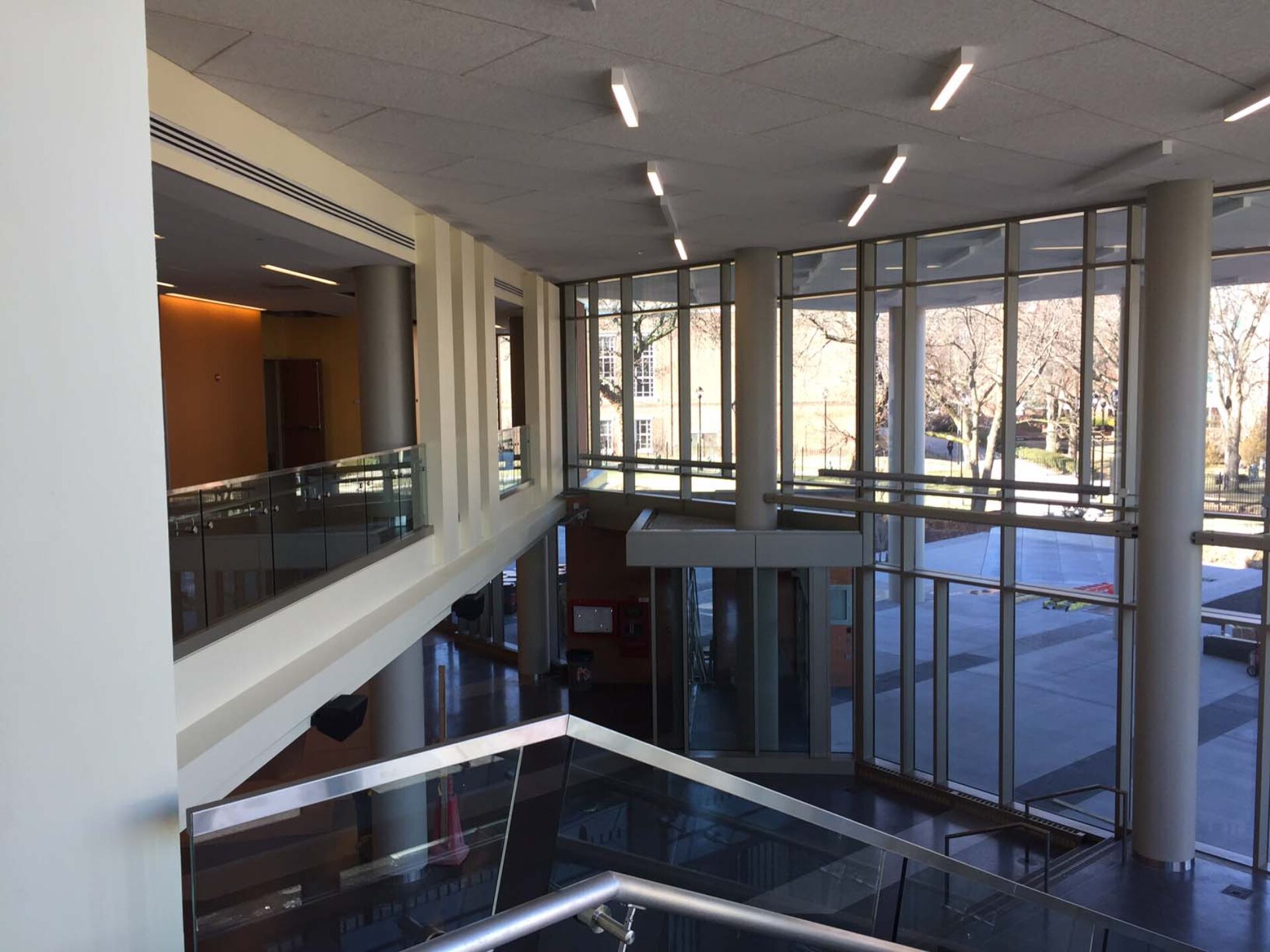
Location Brooklyn, NY
Client City University of New York (CUNY)
Services Construction Management, Estimating & Cost Management, PLA Consulting
Project Value $70 million
Hill provided construction management/build and theatre fit-out services for the Brooklyn College Performing Arts Center. Serving the Music and Theater Departments, the new Center consists of a 64,000 SF addition to the existing Whitman Hall with a 200-seat flexible stage performance space with variable acoustics; rehearsal rooms for orchestra, choral, and theater; a state-of-the-art recording studio; the Pima Center for Computer Music; music studios and practice rooms; and a scene shop. In addition, a gracious lobby was envisioned as a venue not only for pre- and post-performance gatherings, but also for campus-wide receptions and special events, creating a new front door and image for the entire campus welcoming visitors, students, and staff alike.
Building materials, systems, and finishes were all selected with environmental sustainability in mind, making this the first green building on campus. In the expansion, a new landscaped quad and courtyard featuring sculptures, benches, and sitting areas was created, replacing an existing asphalt amphitheater. A small plaza adjacent to the Center offers opportunities for both impromptu gatherings as well as organized events. Beyond the courtyard, the landscaped quad of large trees and greenery includes additional seating. To create the site for this new facility, the existing Gershwin Hall was demolished, temporarily relocating the Music and Theater programs.
Hill performed a feasibility study, cost, and labor analysis, and submitted a report for the utilization of a Project Labor Agreement. In addition, Hill developed recommendations to reduce costs and has helped the architect and engineers address field conditions. Cost-saving recommendations included use of an alternate acoustical panel and alternate materials in classrooms. Hill also recommended changes to conduit run and ductwork layouts to reduce costs. Hill’s recommendations were implemented in the field.
To improve quality, work was reviewed daily by field staff/inspectors and then reviewed by management. Hill’s project executive reviewed all change orders before they were submitted to the City University of New York. Hill also reduced mark-ups for the general construction contractor by issuing change orders to smaller contractors. This saved time and reduced costs to the owner.
The main project challenge was coordinating the work of about ten contractors, under separate contracts, in three buildings. To manage these contractors efficiently, Hill had staff assigned to each contract. We also hired specialty contractors to help keep the project moving. Their roles included filing all documents required to meet New York City Department of Environmental Protection requirements, expediting New York City Department of Building permits, and managing sprinkler systems.